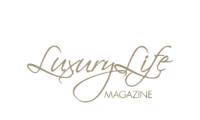8 Minutes
The nasolabial fold is an aesthetic facial soft tissue weakness that appears in the form of wrinkles or a fine line from nose to mouth, that is, extending from the tip of the nose to the corners of the lips on each side. They’re almost imperceptible in a neutral facial expression on someone with young skin, but as skin loses suppleness and muscle mass, they become more prominent.
As we grow older, these wrinkles become more pronounced. In some cases, nasolabial fold wrinkles might become more noticeable when someone smiles. These are sometimes referred to as laugh lines or smile lines.
FAQs
A UNIQUE METHOD
successful and proven integrative holistic conceptAesthetics TREATMENT LASTING APPROACH
0 Before
Send Request
0 Before
Define Treatment Goals
1 week
Assessments
1-4 week
Integrative Holistic Therapies
5-12 week
Aftercare
12+ week
Refresher Visit
Aesthetics Insights
latest news & research on AestheticsHow Long Until You Can Work out After Lip Fillers
Lip fillers are a wonderful method for achieving fuller, plumper lips. As with any treatment, the correct post lip filler care plan is essential to ensuring a positive experience and a speedy recovery
read moreHow To Prevent Bruising After Botox
However, Botox administration does not always result in bruising; in fact, the vast majority of individuals do not develop botox injection bruises after treatment.
read morePost Botox Care
If you would like to learn more about the things you should and shouldn't do after getting botox, continue reading as we're going to discuss what botox i
read moreAccreditations



























































